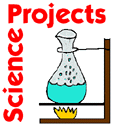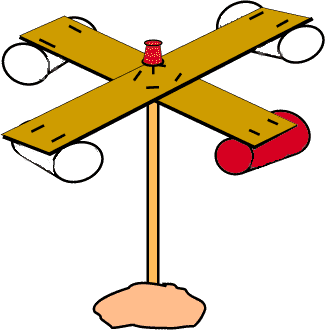

Energy and
Science Projects
For Students
An anemometer is a device that tells you how fast the wind is blowing.
The device you can build is a model of a wind speed indicator. A real one
will be able to accurately measure how fast the wind is blowing. Yours
will give you only approximation of how fast it's blowing. It can't give
you an exact wind speed.
The energy in the moving wind can be used to generate electricity. But you have to know how fast the wind is blowing before you can harness wind power.

Your anemometer is now ready for use!
You may not be able to tell exactly what the wind speed will be in miles per hour. But you can count how fast your anemometer turns to get an idea of how fast the wind is blowing.
Using your watch, count the number of times the colored cups spins around in one minute. You are measuring the wind speed in turns or revolutions per minute. Weather forecasters' anemometers convert the revolutions per minute into miles per hour (or kilometers per hour). Keep a record of the wind speeds you're measuring for the next few days.
Measure the wind speed at different times of the day. Is it the same in the morning; the afternoon; the evening? Move your anemometer to another location. Is it windier in other places? Do trees or buildings block the wind?
Wind speed is important for wind energy. Wind turbines -- which are the
machines that change the movement of the wind into electricity -- need
a constant, average wind speed of about 14 miles per hour before the wind
turbines can generate electricity. That's why wind farms, where there are
a lot of wind turbines grouped together, are located in windy spots. In
California, these are in three main places -- the Altamont Pass east of
San Francisco, Tehachapi south of Bakersfield, and in San Gorgonio near
Palm Springs.
| This Energy Education Project comes from the California Energy Commission | |
|---|---|
 |
 |
| Return to the CEC Science Projects Page | Return to the CEC Energy Quest Home Page |